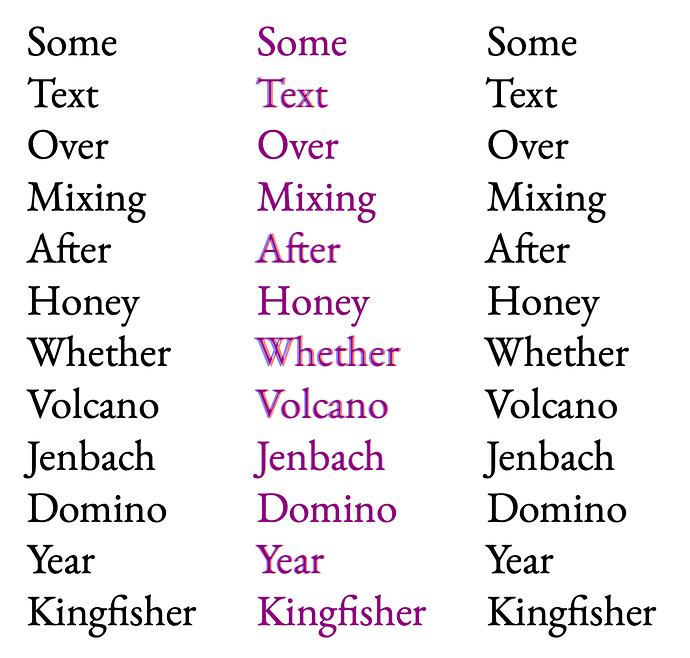Out of 2550 fonts on my computer, only 4 have lfbd and rtbd features. Two of those four have only 3 adjusted glyphs (hyphen, V, and W).
The other two fonts — EBGaramond12-Regular and EBGaramondSC12-Regular — have around 35 adjusted glyph classes for lfbd and rtbd.
So, my answer to
is: no. Practically no font has these features.
If, however, you are still interested, then you should know that the excellent EB Garamond fonts are open-source; you can have a look at their feature code for lfbd and rtbd on the GitHub repository.
In the TeX-world there is the much-used microtype package that does this kind of alignment (among other things). microtype does not use the OpenType lfbd and rtbd features; instead, it reads values from the \SetProtrusion macro. Luckily, EB Garamond also ships with pre-made values for the \SetProtrusion macro which can also be found on GitHub.
This is the effect of using EB Garamond with microtype:
[left: without microtype; middle: red=without, blue=with; right: with microtype]
Note that the left edge on the right column is much more even than the left edge on the left column.
If you have the EB Garamond fonts and either LuaTeX or XeTeX installed, you can try it yourself: demo.zip (7.6 KB)
For technical insight into how a text rendering engine processes such features, have a look at Apple’s 2012 video at timestamp 09:25 on its rendering engine, Core Text. The technical details discussed in the video are not relevant to you as a font designer. Instead, it offers a view into how your font could be processed by an application supporting these features. Again, in practice few applications do.
